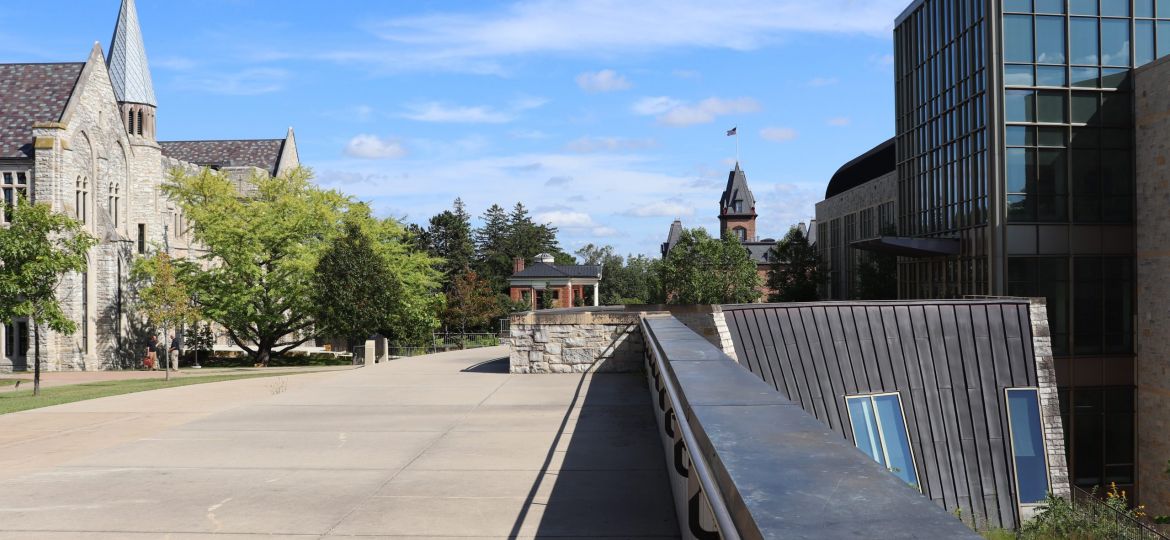
The Steering Committee of the Strategic Resource Allocation Project (SRAP) published its recommendations report in early August. The report, which included numerous revenue enhancements and cost reductions that will affect the College in the coming years, will be presented to the Board of Regents for further review and implementation.
The Project, founded in the fall of 2017, identified a total of $5.5 million of additional revenue for the College. Various revenue enhancements will generate $3.5 million, and the remaining $2 million will come from cost reductions.
Much of the $3.5 million in new revenue has come from the restoration of net tuition revenue lost with the class of 2021. The approximate $1.75 million lost with this class was restored by the following class of 2022. This trend of growing net tuition revenue per student has continued with the class of 2023.
“We’ve been at roughly 800 students for incoming classes,” said Vice President and Chief Financial Officer Jan Hanson. “It’s just that one class [’21] brought between $1,600 and $1,700 less per student than the previous class and the subsequent class, so I’m looking at this as a blip.”
The Benedictine Living Community of Northfield, a senior living facility built on College-owned property, is entering its second phase, which consists of the construction of a second residential building. Together, the two phases will account for $72,000 of revenue. Further income from College-owned properties accounts for another $55,000 in revenue.
“One of the things during this SRAP process was to identify other revenue streams, or to diversify our revenue streams, so that we’re not so solely dependent upon tuition revenue,” Hanson said.
The annual Christmas Festival will also help the College raise revenue from other sources besides tuition. Sponsorships will come in the form of commercials played during the event stream, commissioned pieces of music and donations by individuals and businesses around the Northfield area.
Other sources of revenue include outsourcing the bookstore to Barnes & Noble, athletic ventures brought about by the new ice arena and improved student retention.
Approximately $1 million in cost reductions have come from the elimination of 14.77 full-time equivalent (FTE) faculty and administrative positions. Approximately 13% of the reductions target academic support functions, primarily through the elimination of many academic administrative assistant (AAA) positions. Reductons in facilities staff account for a further 27% of cuts, while 12% come from finance and 10% from advancement.
Four FTE faculty positions were either reduced or reallocated. This included the closure of the American Studies interdisciplinary major. While all departments and programs were affected to differing degrees, humanities programs faced the largest reductions, said Provost and Dean of the College Marci Sortor. Despite these cuts, the humanities has the most faculty out of any academic division, with 62.5 FTE positions. Natural Sciences are second with 61.4.
“There is a lot that we do here that supports the humanities, in one way or another,” Sortor said. “It is important to note that these decisions are carefully considered and always hard.”
The Target Action Group (TAG) focused on course credit identified 1.17 FTE positions that are currently in reserve and could be utilized by the College for the implementation of new programs and majors or the extension of different departments.
“There is a constant process of examination,” said Associate Dean of Natural Sciences and Mathematics Mary Walczak. Walczak led the TAG team. “We are constantly looking to evolve and develop our curriculum.”
The team, in association with different departments and programs, passed along recommendations for the allocation of 1.17 reserve FTE positions to the Dean’s Council. Implementation of these positions is still under deliberation, with no information as to new programs or department extensions at this time.
With the Steering Committee’s report, the two-year SRAP process has ostensibly come to an end. Final recommendations have been presented to the Dean’s Council for further deliberation while the Board of Regents reviews the Steering Committee’s report. SRAP’s philosophy of looking into the future and trying to deal with observable trends effectively and efficiently will remain at the core of the College’s ongoing considerations, Hanson said.
“I’m confident that we had the right discussions with the right people,” Hanson said. “I’m extremely proud of all of the work that has been put into this process.”

